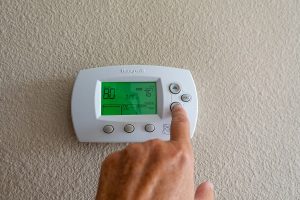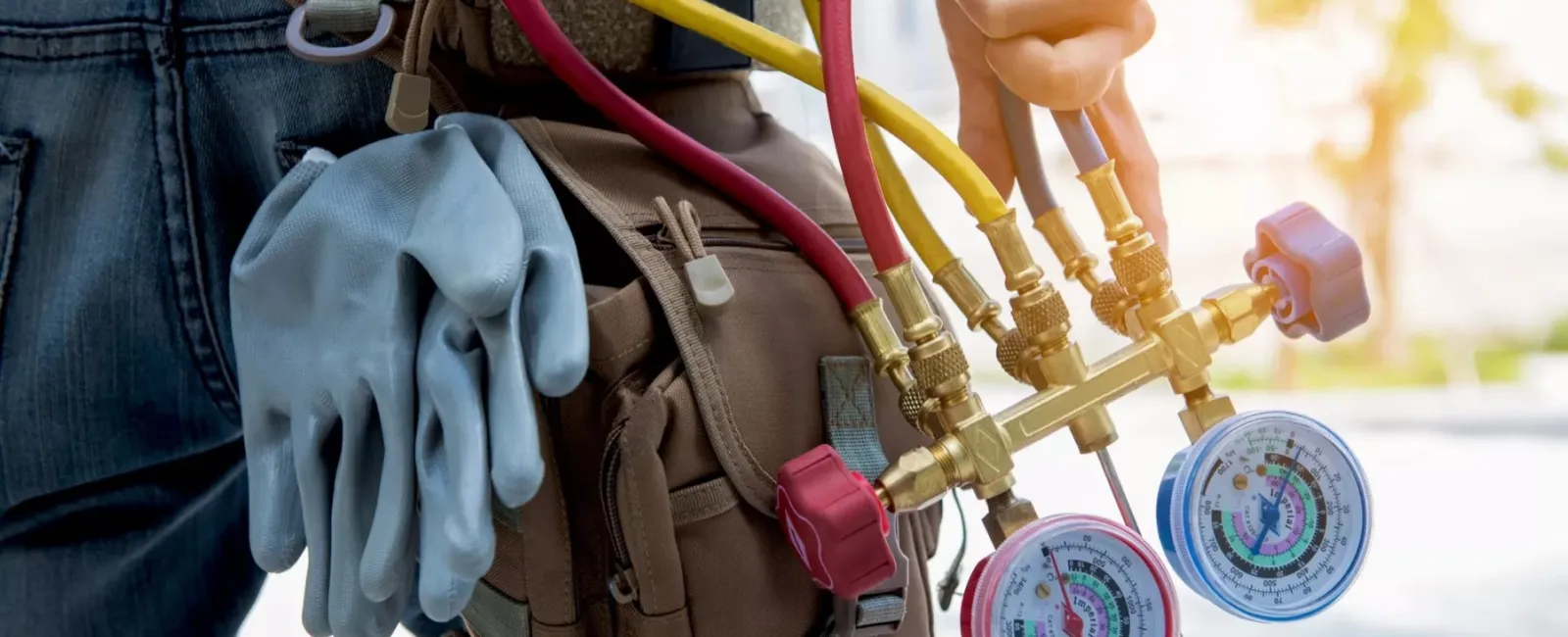Heating and cooling problems frequently end with a homeowner realizing, "Wait, why is my thermostat not working?" While that problem may be easy to identify, it's not always easy to correct. Here's what can go wrong with thermostats, and how you can get your thermostat working again.
An Old-Fashioned Shock to the System
Did your thermostat get bumped or knocked recently? Could it have been accidentally hit during play or while people were in a hurry? Thermostats, especially old thermostats, can be sensitive to bumps and knocks, especially if they rely on mechanical measurement systems (which we'll discuss a bit more below). If a bump has disengaged your thermostat, it may no longer function properly or send signals to the HVAC system, a sign that it's probably time for an upgrade to a digital thermostat that won't have this problem.
Some old-style thermostats also use mercury bulbs as a switching mechanism and these bulbs must stay perfectly level to work properly. A knock can displace these thermostats and prevent them from sensing temperatures. You can grab a level and make sure the thermostat is carefully adjusted back into position, but a better solution is to get a new thermostat entirely. Mercury bulb thermostats are being outlawed in many states because of how toxic mercury is, and there are far more capable alternatives available.
Wiring and Electrical Issues
Is your thermostat flickering on and off, or has it gone completely dead? Or maybe it doesn't seem to be sending any signals to your HVAC system, no matter what temperature you set it to. These are signs of an electrical problem with your thermostat hardware and it's a good idea to schedule an inspection with an experienced technician from Stahl Plumbing so they can take a thorough look.
Poor Thermostat Placement
This problem is more subtle, but also tricky to address. Thermostats use sensors within the thermostat hardware to keep track of the temperature in the house. These sensors are entirely located within the device, so they're only picking up the temperature directly where the thermostat is.
If a thermostat is in the path of a draft or a particular chilly part of the house, it won't be getting the correct temperature readings to work with. The same is true if it's too close to a heater or fireplace. This is why most thermostats are placed in central locations, but sometimes this doesn't work out or remodeling changes the structure of the house.
Some newer, smart thermostats that are more energy efficient do have satellite sensors you can set up in popular rooms so the thermostat gets more accurate readings, but this isn't an option for everyone. The other choice is to hire a professional electrician to relocate the thermostat to a better spot.
Using the Wrong Mode
If the thermostat stopped working suddenly but is still responsive, double-check what mode the thermostat is in. Most thermostats should be in auto or on mode to work correctly, and if your thermostat's not turning on the heat, it could simply be that it was accidentally switched to the wrong mode. Look at your owner's manual to learn more.
Build-Up of Dust and Grime
Thermostat troubleshooting should always include a thorough cleaning, especially if it's been several years since you took off the thermostat faceplate and had a look. If there's lots of dust or a build-up of dirt, especially around contacts or sensors, this could be causing a problem. It's particularly an issue for older thermostats that depend on more limited temperature sensors, which can be confused or disrupted by lots of dust. A cleaning can often set things right.
Age-Related Troubles
The first wave of thermostats was known as "mechanical," because those thermostats used physical means to measure the surrounding temperate. Some had wax valves, some used two strips of different metals that expanded and contracted based on heat and others used mercury bulbs or similar gas bulbs.
This mechanical approach had two big problems: First, it wasn't very accurate and the sensors took time to detect changes. Second, these mechanical pieces had limited lifespans - the older they got, the more their components wore down and stopped responding. If you still have one of these old AC or furnace thermostats not working, it probably isn't doing a very good job of sensing the temperature anymore, which can cause a lot of problems. We recommend upgrading to a new, accurate version.
Thermostat Wi-Fi Isn't Connecting Properly
If you do have a newer smart thermostat, another more modern problem is possible: a thermostat that won't connect to Wi-Fi.
First, make sure that your Wi-Fi is working, your router is on and your internet connection is stable. If everything seems to be functioning, open the app you use to control the thermostat and check to see if it needs any updates. Often, a waiting update can address bugs with Wi-Fi and similar issues. Now shut everything down, including your router, boot back up and try again. If there's still a problem, check your router settings and see if any security or switching features could be responsible.
If you're still having trouble with your heating system after troubleshooting these common thermostat issues, we recommend connecting with a local heat specialist.

